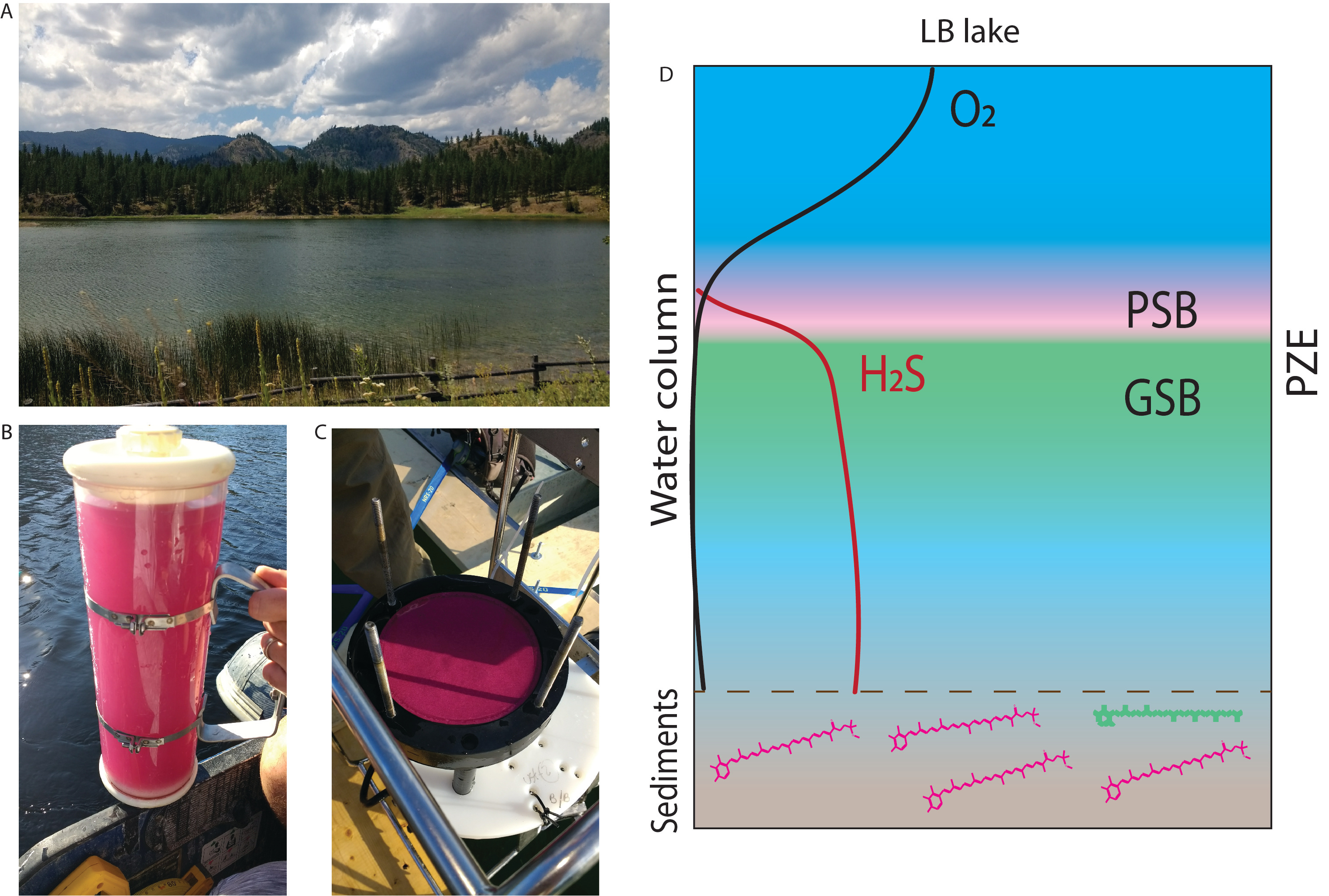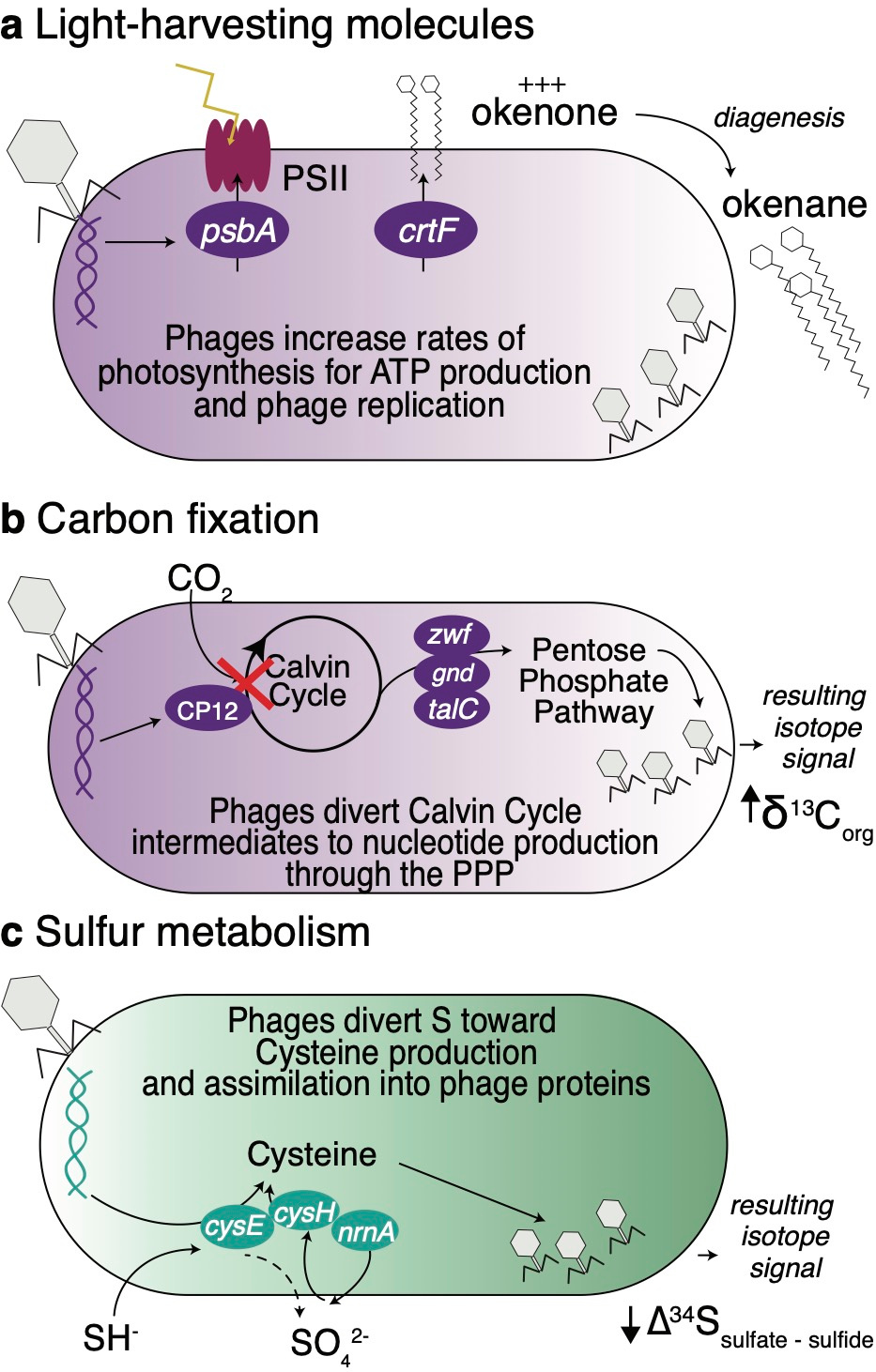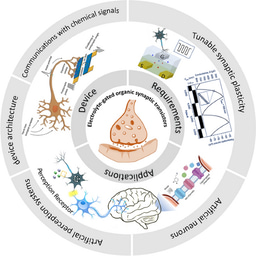Viral infection of anoxygenic phototrophic sulfur bacteria may have modulated biogeochemical cycles in the geological past.
Published in Earth & Environment

Earth was not fully oxygenated throughout its 4.5 billion year history. The planet's oceans experienced many intervals where oxygen was absent or limited, and free sulfide accumulated. In these anoxic environments, photosynthetic bacteria that can fix carbon in conjunction with sulfide oxidation under anaerobic conditions were important organic matter producers. These anoxygenic phototrophs are green sulfur bacteria (GSB) and purple sulfur bacteria (PSB).
Nowadays, anoxygenic photosynthetic sulfur bacteria can be found in euxinic (anoxic and sulfidic) lakes (Figure 1A), where they usually inhabit a layer in the water column characterized by photic zone euxinia. Within the interval of photic zone euxinia, where sulfide occupies the sunlit portions of stratified anoxic water columns, PSB and GSB can form dense microbial plates (Figures 1B and 1C). These lakes are a window to past anoxic or suboxic ecosystems and offer a unique opportunity to understand biogeochemical cycles and identify biosignatures of relict oceans potentially preserved in the geologic record.

Figure 1 – Anoxic and sulfidic lake hosting purple sulfur bacteria. A. Example of a euxinic lake; B and C. Dense microbial plate of purple sulfur bacteria occupying the euxinic photic zone; D. Schematic profile of microbial and geochemical distribution in a euxinic lake.
An example of such biosignatures are lipid pigments synthesized by PSB and GSB to harvest light for photosynthetic processes. Because PSB and GSB have narrow optimal requirements of suboxic to anoxic conditions, free sulfide, and sunlight, their light-harvesting pigments represent biomarkers that provide clues about past biological processes and environmental conditions.
It is traditionally assumed that direct bottom-up control is exerted by environmental gradients on PSB and GSB microbial community composition and activity. However, a growing body of evidence shows that the distribution of PSB and GSB in modern euxinic water columns and their biomarkers that are preserved (or absent) in sediments are not as tightly correlated to physical and chemical conditions (oxygen, sulfide, and light) as previously thought (Figure 1D).
In Hesketh-Best and Bosco-Santos et al. 2023, we proposed that a largely unexplored biotic factor controls the distribution and activity of anoxygenic phototrophic sulfur bacteria: viral infection. We hypothesize that viruses that infect bacteria, known as phages, act as a biological control impacting PSB and GSB ecology and the biogeochemical cycles they modulate in euxinic lakes (Figure 2). Phages can control the host by laterally transferring genes and regulating gene expression.

Figure 2 – Schematic representation of our main hypothesis. Phages control the distribution and activity of anoxygenic phototrophic sulfur bacteria.
By screening metagenomes from sediments and water column from two shallow and sulfidic lakes, Lime Blue and Poison Lake, in eastern Washington (U.S.), in addition to publicly-available genomes of cultured PSB and GSB, we identified almost 300 viral genomes belonging to previously undescribed viral lineages infecting PSB and GSB. Many of these phages encode auxiliary metabolic genes (AMGs) with the potential to modulate host cell metabolism during infection so that the phage can replicate more efficiently. Based on our results, we propose that phages could be modulating PSB and GSB (a) synthesis of light-harvesting molecules, (b) carbon fixation, and (c) sulfur metabolism (Figure 3).
For example, we identified a phage encoding a gene (crtF) for the second-to-last step in the synthesis of an important PSB light-harvesting molecule (okenone). We hypothesize that this phage gene may increase the production of this molecule by PSB during viral infection. Consequently, additional light-harvesting molecules may increase light reaction rates in photosynthesis, accelerating ATP production for viral particle assembly.

Figure 3 - Conceptual hypotheses for viral infection influence on PSB and GSB communities. Viral infection and gene transfer affect the biosignatures of PSB and GSB by modulating their (a) pigment production, (b) carbon fixation, and (c) sulfur metabolism.
This observation could be very relevant when using geochemical signals (biomarkers) of anoxygenic phototrophic sulfur bacteria to interpret the environmental conditions and ecology of the geological past. In other words, viral-mediated changes in biomarker abundance would need to be considered when using pigments as indicators of photic zone euxinia. For instance, the viral infection could lead to higher okenone production and consequent preservation of its diagenetic products (okenane) in the sediments and, ultimately, rocks. This would lead to the extent/strength/duration interpretation of photic zone euxinia, which may need to be revised.
Our observations suggest that viral infections could impact the interpretation of biosignatures produced by phototrophic sulfur bacteria as indicators of biogeochemical cycles in the geologic past. Our team was recently awarded a NASA Exobiology grant to give continuity to this exciting investigation. More soon!
Follow the Topic
-
Communications Earth & Environment

An open access journal from Nature Portfolio that publishes high-quality research, reviews and commentary in the Earth, environmental and planetary sciences.
Related Collections
With Collections, you can get published faster and increase your visibility.
Geology of the Moon
Publishing Model: Hybrid
Deadline: Jan 31, 2026
Archaeology & Environment
Publishing Model: Hybrid
Deadline: Mar 31, 2026




Please sign in or register for FREE
If you are a registered user on Research Communities by Springer Nature, please sign in